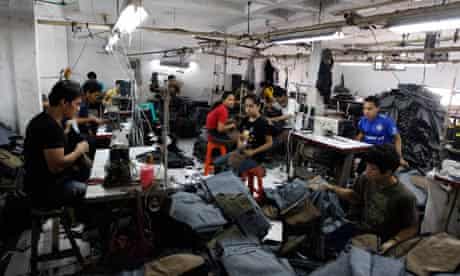ETHICS AND BUSINESS
SOCIAL VALUES
Look at the following pictures. What are the main differences and similarities that you can perceive? 10'
Sweatshops are still supplying high street brands

More than a decade after ____________ labour for high street brands became a mainstream issue, and after plenty of companies have instituted monitoring of their supply chains, the problem still seems endemic right across the ______________ and ___________ sector.
Many of the factories __________ the brands likely to dominate the Olympics in 2012, such as Adidas, Nike, Slazenger, Speedo and Puma, "are routinely breaking every rule in the book when it comes to labour rights", according to the ITGLWF.
What's more, things seem to be getting worse, rather than better. ____________ is becoming more precarious as more workers are put on to temporary contracts, day labour, on call rather than with permanent jobs. That enables employers to dodge holiday pay, sick pay and written contracts. Employers also imposed compulsory overtime, lower ________ and higher production targets on workers on these______________ contracts.
What is your opinion on this type of employment?
If you are home, write a comment on the blog.
Now that we have talked about ethics in business. In pairs, imagine that you have to create a new business, plan it and write down the details that would make your company completely fair and legal. Discuss it and list the details 15'
![]() Graded version: ideas that could be included: here
Graded version: ideas that could be included: here
1.
2.
3.
4.
5.
.
.
.
__________________
TIME TO WORK ON THE FINAL TASK '15
go to: FINAL TASK 5



Comments
Post a Comment